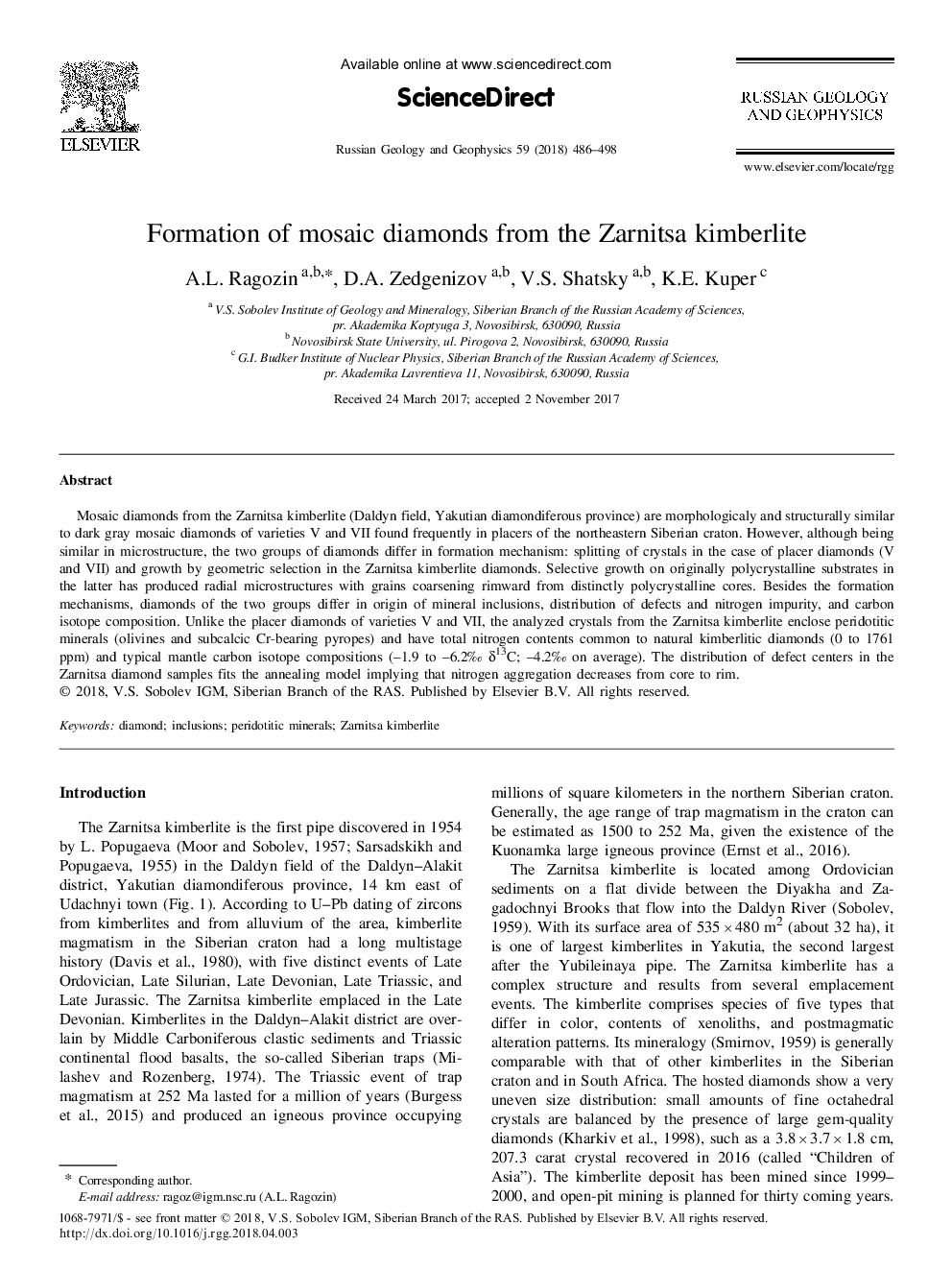| Article ID | Journal | Published Year | Pages | File Type |
|---|---|---|---|---|
| 8915170 | Russian Geology and Geophysics | 2018 | 13 Pages |
Abstract
Mosaic diamonds from the Zarnitsa kimberlite (Daldyn field, Yakutian diamondiferous province) are morphologicaly and structurally similar to dark gray mosaic diamonds of varieties V and VII found frequently in placers of the northeastern Siberian craton. However, although being similar in microstructure, the two groups of diamonds differ in formation mechanism: splitting of crystals in the case of placer diamonds (V and VII) and growth by geometric selection in the Zarnitsa kimberlite diamonds. Selective growth on originally polycrystalline substrates in the latter has produced radial micro structures with grains coarsening rimward from distinctly polycrystalline cores. Besides the formation mechanisms, diamonds of the two groups differ in origin of mineral inclusions, distribution of defects and nitrogen impurity, and carbon isotope composition. Unlike the placer diamonds of varieties V and VII, the analyzed crystals from the Zarnitsa kimberlite enclose peridotitic minerals (olivines and subcalcic Cr-bearing pyropes) and have total nitrogen contents common to natural kimberlitic diamonds (0 to 1761 ppm) and typical mantle carbon isotope compositions (-1.9 to -6.2%c 513C; -4.2%c on average). The distribution of defect centers in the Zarnitsa diamond samples fits the annealing model implying that nitrogen aggregation decreases from core to rim.
Keywords
Related Topics
Physical Sciences and Engineering
Earth and Planetary Sciences
Geology
Authors
A.L. Ragozin, D.A. Zedgenizov, V.S. Shatsky, K.E. Kuper,
